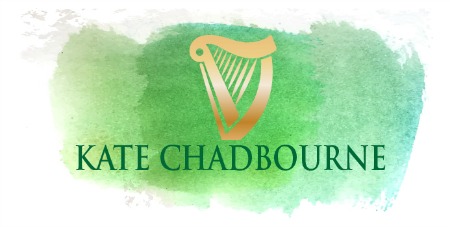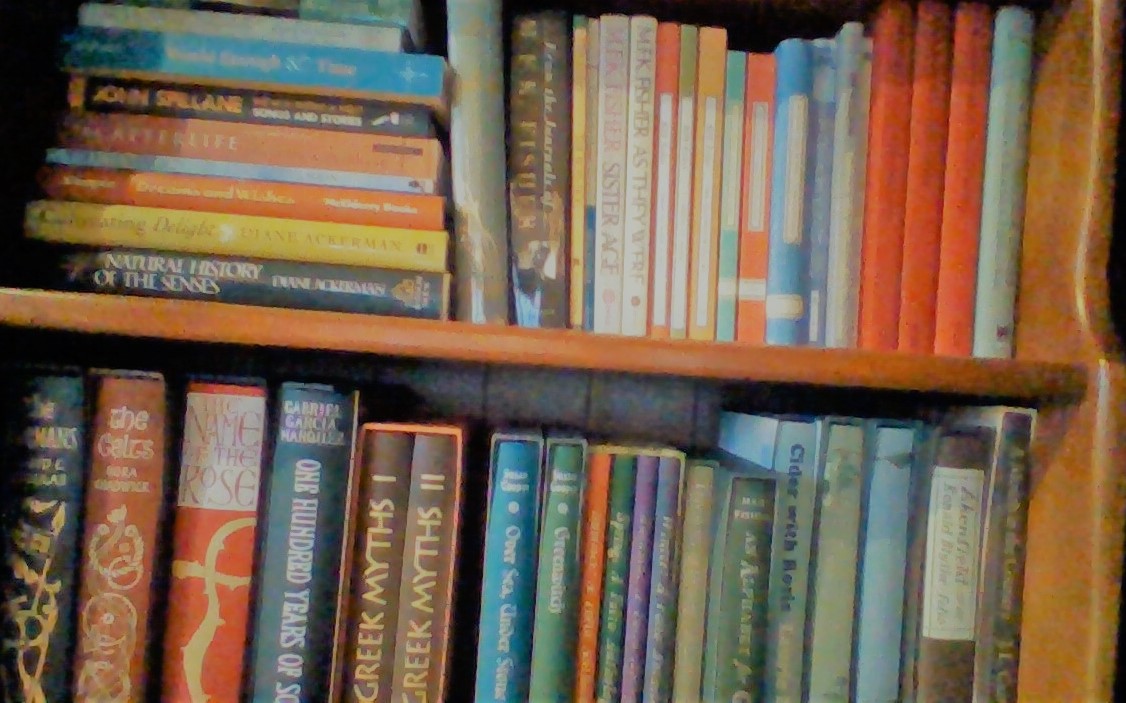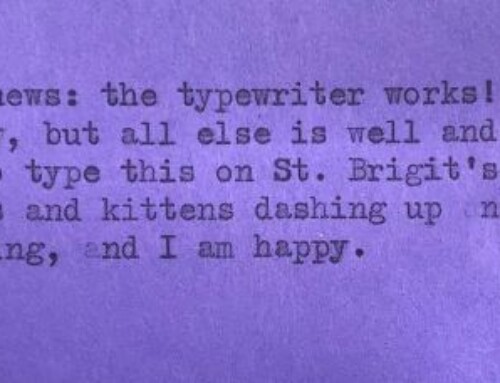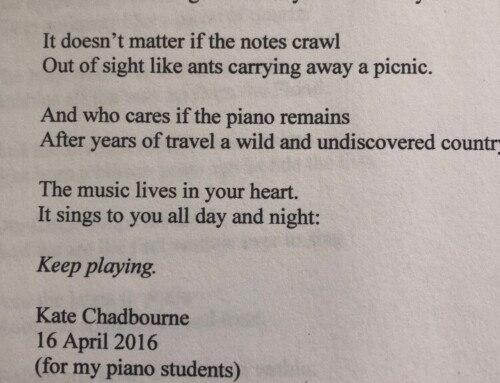When I was in high school, I fell in love with the writing of Annie Dillard. I’d never read anything like her before, this combination of poetic prose and personal narrative imbued with the fervent nature-love of Thoreau and the spiritual depth and yearning of a medieval mystic. I studied her books and saw in them new possibilities for myself, both as a person and as a writer.
She visited Boston College in my freshman or sophomore year and I could hardly wait to hear her speak in person. I went to the lecture as one goes to church, fully expecting to be filled up with light and grace. Of course that’s not what happened. Dillard seemed from the first moment she stepped on stage extremely reluctant to be there. She crossed her legs and sighed, barely looking at her interviewer. When asked how she had evolved her ground-breaking style, Dillard waved her hand and said something dismissive about stacking adverbs and adjectives together. The luminous writer I expected – required – was replaced with a shy, somewhat arch woman.
I’m a little ashamed now to admit that I made a small scene as I left the hall early that night. I was young and disappointed and had a lot to learn about the difference between the narrative “I” and the actual flesh-and-blood “I” – to say nothing of the real-world grace of cutting other people slack on an off-night.
I’m thinking about that today on the heels of reading Rachel Hollis’ new book, Didn’t See That Coming. She wrote the book in 2020 as we limped through months of shock and despair with the pandemic and some of the most rancorous politics ever witnessed. I read the book purely out of curiosity; I’d just heard her on a podcast and when the book became available on my library’s e-book platform, I plunged in.
Here’s my impression:
A sincere effort to be of service. Her heart is in the right place. Much of what she says is common-sense and much of it is informed by the self-development culture which repeats that common-sense and puts it in memes to share on the internet. Nothing wrong with any of that. The book is not ground-breaking, in my opinion, but honestly, it wasn’t written for me. It was written for her audience of younger women who flock to her social media channels and for whom many of these ideas are new or at least not as well-worn as they are for me.
That doesn’t mean it was a waste of my time, though. Hollis has certainly survived some terrible trauma, including, at 14, her discovery of her brother’s suicide as she got ready for school one morning. If that doesn’t count as traumatic, I don’t know what does. I cried, reading that section; it was raw and real and the most beautifully-written part of the book. In the end, she exhorts the reader to use the gift of life to the utmost, a message I can never hear too often.
When I looked at reviews of this book, I saw everything ranging from disappointment to ad-hominem attack. Some fans of her first books felt it was rushed and repetitive. Others said that the boot-strapping and positivity she advocates reveal her blindness to the disadvantages and sufferings of others as well as to her own privilege. Some people accused her of profiting from the scandal associated with her very recent divorce. Many pointed out that she had sold relationship advice to couples by posing as a happily-married woman, when in fact her marriage had been crumbling for years.
There was fury and even malice in many of these reviews as well as the glee that comes with the toppling of an idol. There was exaggeration and profanity and outrage. There was very little measured, thoughtful response to her book.
I see that my own relatively balanced response is made possible by the fact that I didn’t need Hollis to be anything other than a person writing a book.
If I had paid for her relationship advice, I would not be able to evaluate her book this way.
If I’d followed her on social media and made her into a guru, I would see her book through the lens either of the devoted follower or the disappointed ex-follower.
If I were jealous of her business success, I would look for ways to minimize her importance by criticizing her book.
The reading lens is colored by investment and need. It’s personal.
It’s worth asking, especially when we feel an instinct to publicly criticize a book or person or work of art: “What lens am I seeing through? How are my views colored by my personal experience? Am I being fair and reasonable or am I venting my spleen?”
How might we know the difference?
Generally, when we’re being fair and reasonable, we’re calm. We can see things in more than one way. We don’t see so much in black and white. And for the most part, we don’t use profanities or coarse language.
When we’re venting our spleen, there is a gleeful undercurrent of “Gotcha!” or “It’s your turn to suffer!” We have a sense of evening the score. We talk more about the person than about the book itself and we do so in black and white terms. And yes, these kinds of “comment” tend to be embellished with profanities and rude language.
I’m not saying that we shouldn’t speak up when public figures lie or abuse their power and influence. We need thoe brave voices to point to issues and abuses and to call them out.
I’m more interested here in developing personal awareness as we read of HOW we read and, after the fact, how and why we respond.
We can learn a lot about ourselves if we seek to answer those questions.




Dear Kate,
I just read your blog and was wowed by it. I love your way of articulating / communicating which I find to be fair and clear, and also quite beautiful and helpful. Inspired, I plan to zoom out from my reading experience be it book or article or simple note on scrap. Thank for sharing your gift, your way of communicating, your beautiful self.
Dearest Cynth,
You are such a generous reader and I deeply appreciate your presence here and your reception of this essay. Thank you!